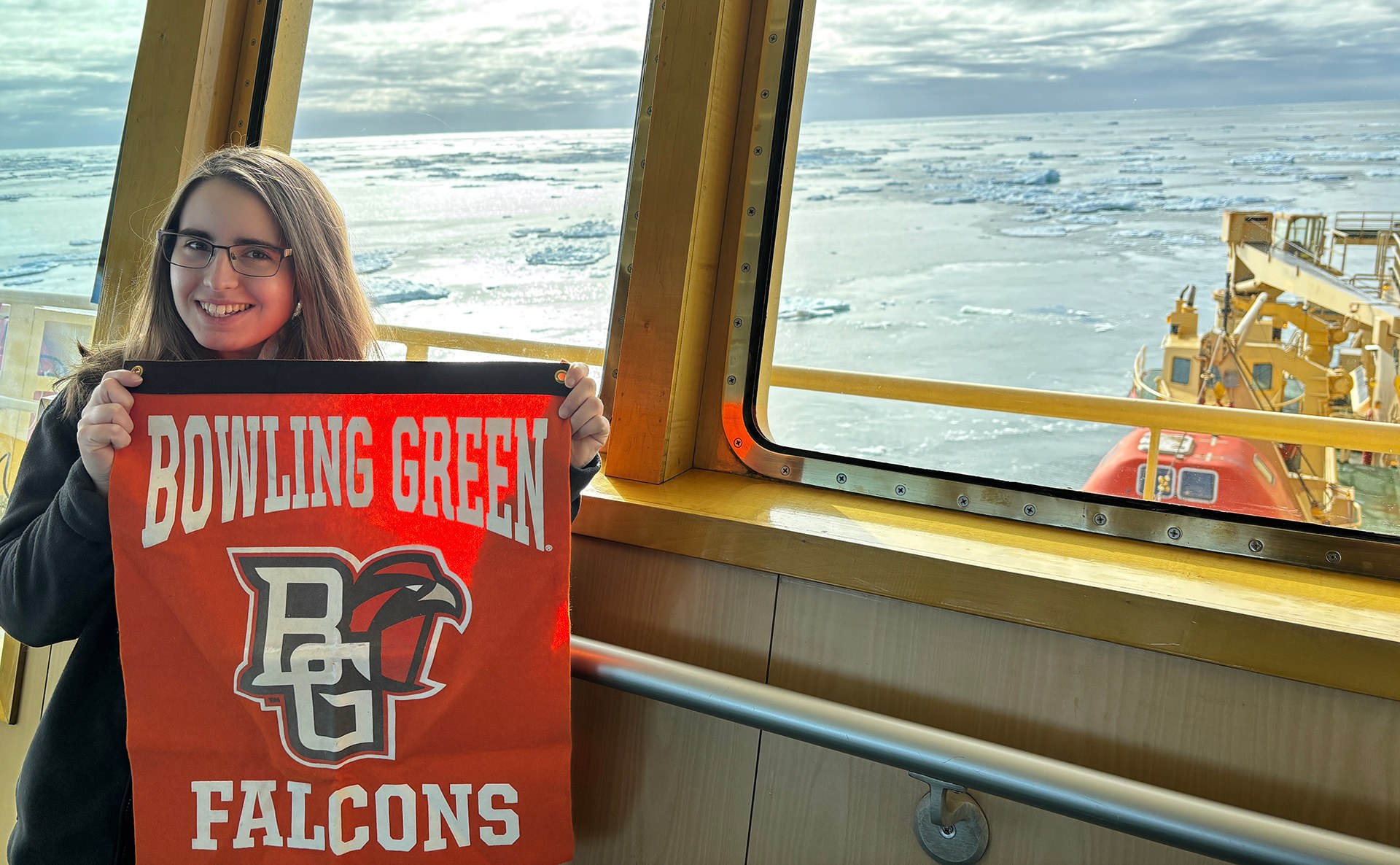
In photos: BGSU scientists return from months-long expedition to Antarctica

Researchers from Bowling Green State University returned from a months-long journey across the world to study undersea volcanoes in the Ross Sea, near the coast of Antarctica, shedding light on one of the least-seen parts of the Earth.
BGSU Geology Professor Dr. Kurt Panter as well as graduate students Katie Shanks ’24 and Jacci Kalemba ’24 spent two months aboard the Nataniel B. Palmer, a research-focused icebreaker, while fellow graduate student Robert O’Conke ’24 organized the team’s research and space preparations back in Bowling Green.
The ship departed from New Zealand and traveled more than 2,000 miles across the ocean into the southern Ross Sea to better understand the overall effects of volcanic activity in Antarctica, which is home to active volcanoes despite the glaciated environment of the region.
Scientists dredged the ocean floor, used cameras to observe the volcanic seamounts, found evidence for hydrothermal activity and mapped the area in detail with sonar for the National Science Foundation-funded project, which hopes to shed light on what role volcanoes play in the stability of ice sheets in western Antarctica.
“The big picture is really trying to understand the interactions between the lithosphere, which is the solid earth of the seafloor, the hydrosphere, which is the sea itself, and the cryosphere, which are the ice sheets that covers a significant portion of the Earth,” Panter said. “We want to understand the dynamics between those three spheres and their interactions, and more specifically, how that interaction may control ice-sheet loss.”
The team’s initial findings have been submitted for publication and the overall findings will be published at a later date, but the team took hundreds of photos on the journey, some of which they shared with the greater BGSU learning community here.
Related Stories
Media Contact | Michael Bratton | mbratto@bgsu.edu | 419-372-6349
Updated: 06/13/2025 02:08PM











